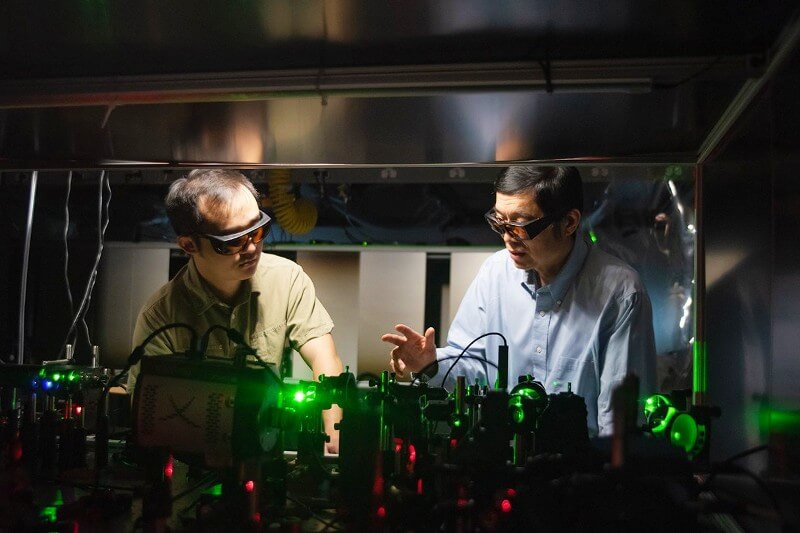In a paper appearing in the journal Nature Communications, a team led by Lihong Wang, Bren Professor of Medical Engineering and Electrical Engineering, shows the achievement of a leap forward in microscopy through what is known as quantum entanglement. Quantum entanglement is a phenomenon in which two particles are linked such that the state of one particle is tied to the state of the other particle regardless of whether the particles are anywhere near each other. Albert Einstein famously referred to quantum entanglement as “spooky action at a distance” because it could not be explained by his relativity theory.
According to quantum theory, any type of particle can be entangled. In the case of Wang’s new microscopy technique, dubbed quantum microscopy by coincidence (QMC), the entangled particles are photons. Collectively, two entangled photons are known as a biphoton, and, importantly for Wang’s microscopy, they behave in some ways as a single particle that has double the momentum of a single photon.
Since quantum mechanics says that all particles are also waves, and that the wavelength of a wave is inversely related to the momentum of the particle, particles with larger momenta have smaller wavelengths. So, because a biphoton has double the momentum of a photon, its wavelength is half that of the individual photons.
This is key to how QMC works. A microscope can only image the features of an object whose minimum size is half the wavelength of light used by the microscope. Reducing the wavelength of that light means the microscope can see even smaller things, which results in increased resolution.
Quantum entanglement is not the only way to reduce the wavelength of light being used in a microscope. Green light has a shorter wavelength than red light, for example, and purple light has a shorter wavelength than green light. But due to another quirk of quantum physics, light with shorter wavelengths carries more energy. So, once you get down to light with a wavelength small enough to image tiny things, the light carries so much energy that it will damage the items being imaged, especially living things such as cells. This is why ultraviolet (UV) light, which has a very short wavelength, gives you a sunburn.




